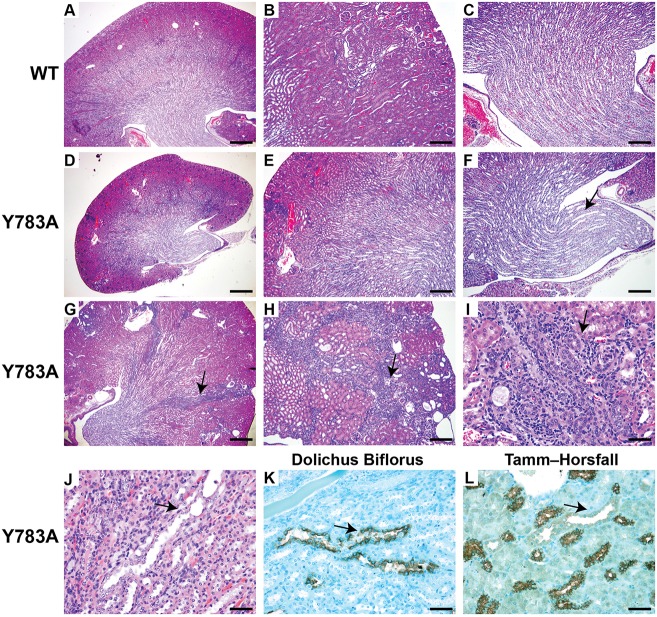Fig. 1.
Integrin β1 Y783A kidneys are small and fibrotic. (A-C) Periodic acid-Schiff (PAS)-stained kidney slides of the whole kidney (A), the cortex (B) and medulla (C) of 4-week-old wild-type (β1flox/flox) kidneys. Scale bars: 500 µm in A; 200 μm in B,C. (D-I) PAS-stained slides of the Y783A kidneys. Four-week-old Y783A kidneys are smaller (D), with a smaller cortex (E) and a hypoplastic dysplastic medulla and papilla (arrow) (F). Scale bars: 500 μm in D; 200 μm in E,F. By 3 months of age, the Y783A kidneys have fibrosis in the medulla and medullary rays (arrow) (G). Scale bar: 200 μm. By 5 months of age, the Y783A mice have disorganized, hypercellular and fibrosed tubules (arrows) in the medulla and medullary rays (H,I). Scale bars: 100 μm. (J) The CDs (arrow) of 3-month-old kidneys display evidence of dilatation and intratubular cell proliferation. Scale bar: 50 μm. (K,L) The tubule (arrow) was verified to be CD by staining positive for the lectin Dolichos biflorus (K) and negative for Tamm-Horsfall protein which stain the thick ascending limb (L). Scale bars: 50 μm. At least six male or female mice for each of the time points was examined.

